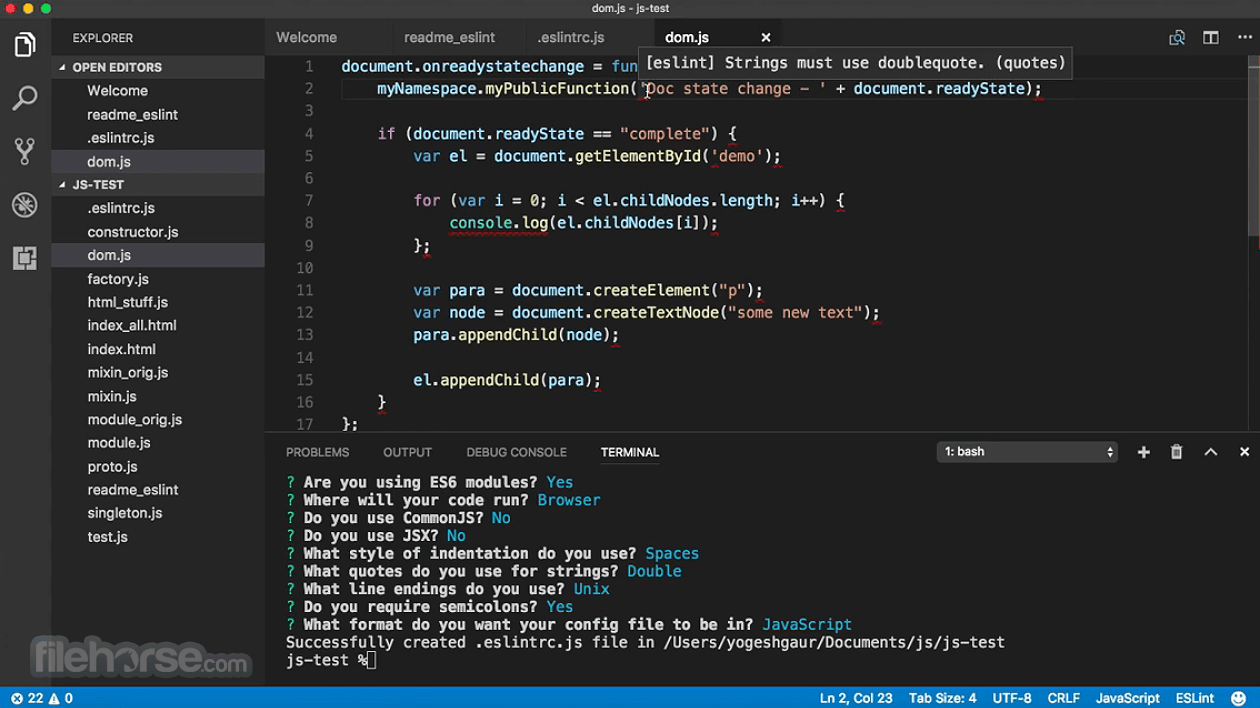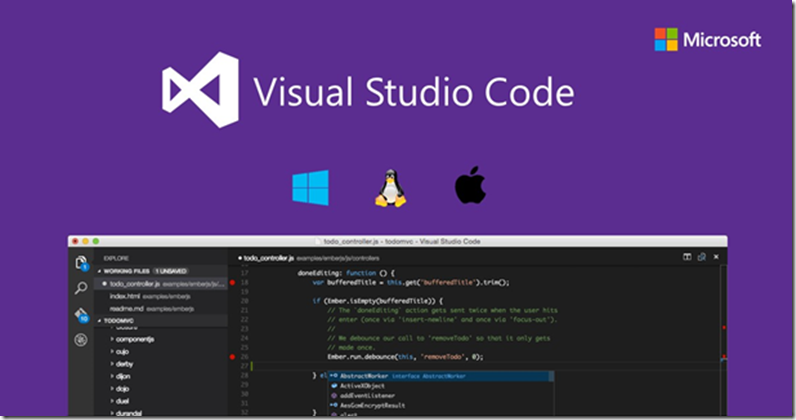- Vs Code Electron Version
- Visual Studio Electron App
- Visual Studio Code Electron
- Electron Vs Code
- Visual Studio Code Electron Typescript
This guide goes over how to set up VSCode debugging for both your own Electron project as well as the native Electron codebase.
Welcome to the March 2021 release of Visual Studio Code. There are a number of updates in this version that we hope you will like, some of the key highlights include: Accessibility improvements - Multi-cursor support and increased line limit. Updated icons for macOS Big Sur - Brand icons that match the visual. Electron at that time needed street credibility and exposure as a new web development tool. It is a hybrid tool that grants web developers the ability to create desktop applications in a web environment, with ease of use. Microsoft was happy to champion their cause to get more exposure in web development circles. WPF and UWP are good enough.
Debugging your Electron app
Vs Code Electron Version
Main process
1. Open an Electron project in VSCode.
2. Add a file .vscode/launch.json with the following configuration:
3. Debugging

Set some breakpoints in main.js, and start debugging in the Debug View. You should be able to hit the breakpoints.
Here is a pre-configured project that you can download and directly debug in VSCode: https://github.com/octref/vscode-electron-debug/tree/master/electron-quick-start
Debugging the Electron codebase
If you want to build Electron from source and modify the native Electron codebase, this section will help you in testing your modifications.
For those unsure where to acquire this code or how to build it, Electron's Build Tools automates and explains most of this process. If you wish to manually set up the environment, you can instead use these build instructions.
Windows (C++)
1. Open an Electron project in VSCode.
2. Add a file .vscode/launch.json with the following configuration:
Configuration Notes


cppvsdbgrequires the built-in C/C++ extension be enabled.${workspaceFolder}is the full path to Chromium'ssrcdirectory.your-executable-locationwill be one of the following depending on a few items:Testing: If you are using the default settings of Electron's Build-Tools or the default instructions when building from source.Release: If you built a Release build rather than a Testing build.your-directory-name: If you modified this during your build process from the default, this will be whatever you specified.
- The
argsarray string'your-electron-project-path'should be the absolute path to either the directory ormain.jsfile of the Electron project you are using for testing. In this example, it should be your path toelectron-quick-start.
3. Debugging
Set some breakpoints in the .cc files of your choosing in the native Electron C++ code, and start debugging in the Debug View. Download hawkbell usb devices driver.
Visual Studio Electron App
Build system for Electron Builder.
Installation

Extension Marketplace
Launch Quick Open, paste the following command, and press Enter
ext install electron-builder
Packaged Extension
Download the package extension from the the release page and install it from the command-line:
Alternatively, you can download the packaged extension from the Open VSX Registry or install it using the ovsx command-line tool:
Clone Repository
Change to your Visual Studio Code extensions directory:
Clone repository as electron-builder:

Usage
Prerequisites
By default, electron-builder is expected to be installed as a local dependency. Alternatively, you can specify the path to electron-builder in your user settings.
Electron Builder expects your project to include the electron module as a devDependency. Likewise, if you want to work with TOML configurations, you need to install the toml module as a devDependency.
Building
You can run the Electron Builder: Build from the command-palette or from the title menu when opening a configuration file. When no such file has been opened, your workspace will be scanned for eligible configurations. Hitachi printers driver download for windows 10.
Configuration Precedence:
Visual Studio Code Electron
- extension settings using
--configoption package.jsonwithbuildfieldelectron-builder.ymlelectron-builder.yamlelectron-builder.jsonelectron-builder.tomlelectron-builder.js
Options
pathToElectronBuilder
Type: string
Default: ${workspaceFolder}/node_modules/.bin/electron-builder
Path to your electron-builder, defaults to your locally installed dependency
Electron Vs Code
electronBuilderArguments
Type: string[]
Default: []
Custom arguments for electron builder
Related
License
Visual Studio Code Electron Typescript
Ebro electronic gmbh & co. kg others driver download. This work is licensed under The MIT License
